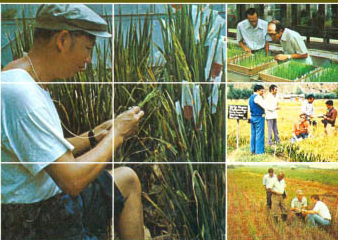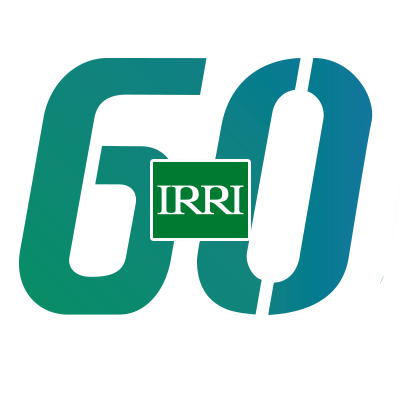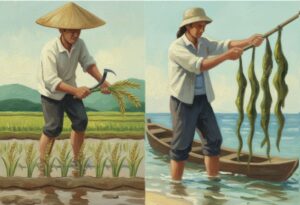Our potential for future international cooperation was greatly enhanced in 1978 by the development of active cooperation with scientists from the People’s Republic of China. Cooperation with China on rice research is an important milestone, not only for IRRI, but for all rice-growing countries. The rice genetic resources in that country are invaluable sources of genetic variability, which breeders can use to help improve rices around the world. Chinese scientists have made remarkable progress in developing and utilizing hybrid rice. They report about 5 million hectares of new hybrids.
 The year 1978 saw a new high in IRRI involvement in international cooperation. The international research networks, which IRRI helped initiate earlier. made continued achievements. The specific progress of the International Rice Testing Program and of the Cropping Systems Program were most impressive, and our agroeconomic constraints and farm machinery networks continued to provide linkages with scientists and engineers in other countries.
The year 1978 saw a new high in IRRI involvement in international cooperation. The international research networks, which IRRI helped initiate earlier. made continued achievements. The specific progress of the International Rice Testing Program and of the Cropping Systems Program were most impressive, and our agroeconomic constraints and farm machinery networks continued to provide linkages with scientists and engineers in other countries.
Our potential for future international cooperation was greatly enhanced in 1978 by the development of active cooperation with scientists from the People’s Republic of China. This accomplishment was the culmination of four years of friendly exchanges among IRRI scientists and administrators, and officials of China. In 1974, the Director General of IRRI visited China as a member of a U.S. Plant Sciences study team, Chinese agricultural officials on trips to the Philippines visited IRRI in 1975 and early in 1976. They invited three IRRI teams of scientists to tour important rice-growing areas of China. Many Chinese scientists and other officials visited IRRI.
In 1978, four Chinese rice scientists spent nearly eight months at IRRI. While there they participated in a 4-month Genetic Evaluation and Utilization training course and had joint research projects with IRRI scientists. Several Chinese scientists participated in 1978 international conferences at IRRI.
 Early in 1979, we formalized our working relationships with the Chinese Academy of Agricultural Sciences and developed a formal resume of cooperation that includes the exchange of genetic materials and scientists. Among the other areas of mutual interest are genetic resource collection and storage, international rice testing, innovative breeding techniques, biological taxation of nitrogen, small-farm machinery development, and fertilizer efficiency
Early in 1979, we formalized our working relationships with the Chinese Academy of Agricultural Sciences and developed a formal resume of cooperation that includes the exchange of genetic materials and scientists. Among the other areas of mutual interest are genetic resource collection and storage, international rice testing, innovative breeding techniques, biological taxation of nitrogen, small-farm machinery development, and fertilizer efficiency
Cooperation with China on rice research is an important milestone, not only for IRRI, but for all rice-growing countries. China is the world’s largest rice producer. It produces far more rice than all the countries of North and South America and of Africa, combined. Its production is about as much as that of all the other countries of Asia, excluding India, combined.
But China’s importance as a cooperator is not based strictly on the size of its rice crop, The rice genetic resources in that country are invaluable sources of genetic variability, which breeders can use to help improve rices around the world. Chinese scientists have made remarkable progress in developing and utilizing hybrid rice. They report about 5 million hectares of new hybrids
The expanding cooperation with China can also be significant to that country. It wives Chinese scientists access to the world’s largest collection of rice genetic resources. It will encourage interaction with scientists from other rice-growing countries, and especially those from Asia. Breeding lines with host resistance to major insects and diseases – a major concern in South China-can be exchanged as can scientists among cooperating countries.
Already plans are underway for a jointly sponsored conference-cum-monitoring tour to be held in South China in October 1979. Scientists from other Asian countries and from IRRI will participate along with their Chinese counterparts.







The full report is corrupted. The contents are blurry and about 200 pages are missing. Please, how can the full report be accessed?
We apologize for the incomplete file. Please use this link for the complete version.
Please, where can I find 1987, and 1994 – 2000 IRRI annual reports?